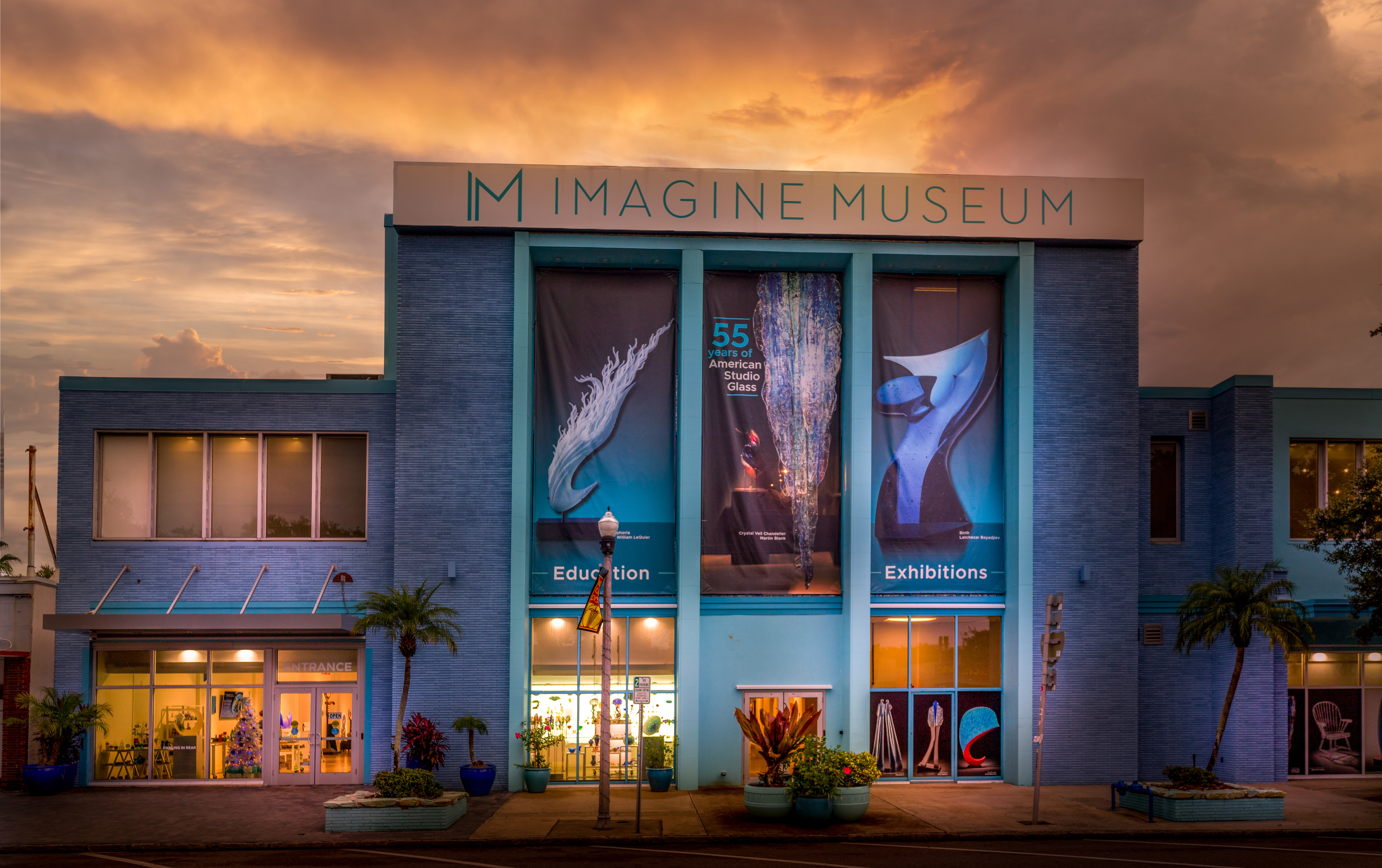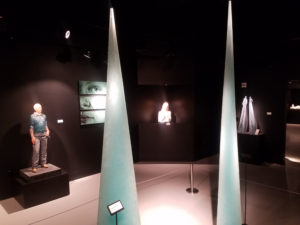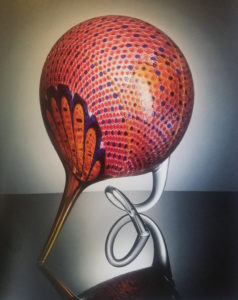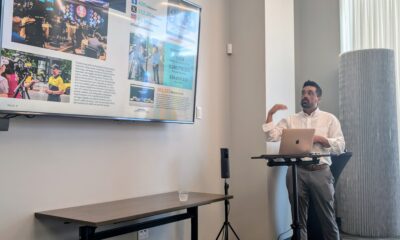Create
Imagine Museum: A cornerstone of Florida’s ‘Glass Coast’

Imagine a future in which the art world refers to our slice of Florida as the Glass Coast, because it’s frontloaded with artists, galleries and museums dedicated to the American studio glass movement.
The future, according to Imagine Museum executive director Jane Buckman, is now. Open for just a year, the 48,000 square foot facility at 1901 Central Ave. is the latest – and the most visible – example of St. Petersburg’s expanding embrace of this relatively new form of delicate, three-dimensional, light-infused sculpture.

Photo by Bill DeYoung
“There are many collectors that are on this coast – major, major collectors from Naples up through Clearwater,” Buckman says. “Many of the glass collectors around the country are finding Florida the place to retire. What brought glass to this area are the collectors. They brought their collections down. And if they’re still acquiring in their collections, that’s creating a market for people to sell.”
Between the Morean Art Center’s extensive collection of pieces by Dale Chihuly, the best-known glass artist in the world, the working studios and galleries of Duncan McClellan, Zen and others, the whole Glass Coast designation was already being bandied about when Imagine’s (glass) doors first opened on Jan. 27, 2018.
The international Glass Art Society (GAS) conference comes to St. Pete March 28-30, giving the area even more validation. Approximately 1,000 glass artists, educators and students will descend on St. Pete, and their itinerary includes visits to all the “glass houses” in town for demonstrations, discussions and more.
Buckman, who says she pitched the idea to GAS two years ago, says the conference is a major coup for the city (the last one was held in Italy). “They go to major cities with glass hubs,” she explains. “And I think the artists, wherever they’re from, will be looking at St. Pete, looking at the art community here, and some will say ‘You know what? Seattle or wherever is too expensive; I could be here and be in this growing scene.’
“I mean, in order to make this cultural arena work, you have to have artists that are also working here. And have something being made here that’s being recognized.”

Trish Duggan
The Imagine Museum was brainstormed, bought and built by billionaire businesswoman and philanthropist Trish Duggan, a relatively new arrival to the Clearwater area. Among her many artistic passions, Duggan is an aficionado of glass art – she is, in fact, a talented creator herself in the tricky and temperamental medium.
Her fascination with glass art began with the works of Marlene Rose, a Clearwater artist. “I started collecting, and it spread out from there,” Duggan said during a January talk at the Vinoy Resort. “And I thought ‘How can I make those people famous, like Peggy Guggenheim made the modern artists famous?’ Because in America, this is a new art, and pretty soon it’ll be accepted worldwide as art that people are going to be collecting.”
She bought the building on Central, the former home of the Imagine Charter School (Duggan liked the name, so it stayed) and formed a nonprofit.
The collection, which numbers more than 500 pieces, was curated by Corey Hampson, of Michigan’s Habatat Galleries. Duggan tasked Hampson, a nationally-recognized scholar and expert on glass art, with creating a timeline – tracing the history of the American glass art movement, which began in the early 1960s – and to locate pieces that reflect the change and innovation in glass art over time.
This he did. And Duggan bought every piece, and had it all shipped to Florida.
Duggan, who is the chairman of the museum’s small board of directors, is paying for everything herself. That’s how strongly she believes in the art – and in the community.
“Our goal,” says Buckman, “is for this gift to the City of St. Pete become self-sufficient. And I do believe we’ll make that happen – we’ll get the numbers to sustain it. And I think we’ll be able to get the investments, and the legacy kind of gifts, that will help sustain us through.”

Steven Powell, “Cherry Manic Scooter”
Approximately 20,000 visitors toured Imagine in its inaugural year, just a percentage of the Dali Museum’s attendance. “I think it takes three to five years for a museum to find their footing,” Buckman suggests.
“People will say ‘People don’t know about you – you should do more marketing.’ Well, if you knew all the dollars I’ve spent in marketing! The reality is that people have to know you, so that they can make that relationship when they see you. That takes time. And it’s obvious to me, going into the second year, that more people are hearing about us. Word of mouth is probably the most direct marketing that can happen, especially in this kind of community.”
She expects attendance to double in Year Two, and grow exponentially over time. Before the GAS conference comes to town, a new glass gallery – owned and operated by none other than Corey Hampson – will move into the former home of Urban Brews and BBQ, next door to the Imagine Museum.
Imagine will expand as well. Duggan, who owns the entire block, recently purchased a massive collection of glass works by international artists.
Not long after Imagine was launched, another privately-owned museum – the James Museum of Western and Wildlife Art – opened in St. Petersburg. This fall, there’ll be a third, the Museum of the American Arts and Crafts Movement. They are owned, respectively, by finance giant Tom James and pharmaceutical mogul Rudy Ciccarello.

Anthony James, “Portal Icosahedron,” titanium and specialized glass, 2018.
For Buckman, the city, for all its chest-thumping about being an arts center, needs to put its money where its mouth is. “You can tout it, and it can bring in tourists, but how, really, is the city embracing the arts?” she says, adding “Here, I think they’re being pretty darn good with the Warehouse District and how open they’re being to that, and all the growth on Central.
“You can say you are this cultural hub, you can have all of this, but the community and the city needs to support it. The dollars have to come, to support the movement. Having lived in Chicago, L.A. and Seattle, all at the time when their art scenes were growing, I’ve seen that to sustain them the communities need to support them.
“That’s when I have the opportunity to talk to the various politicians; that’s where the rubber actually reaches the road.”
Marketing this area as a cultural destination – not just its “white, sandy beaches and turquoise water” – would help, according to Buckman.
Meanwhile, the movement to establish the Glass Coast continues. And for Buckman, the journey, not the end result, is the fun part.
“No one will have this experience ever again,” she says. “I get to work with Trish, who I really, sincerely care for. She is so sincere and her passion is so real, and it really is a pleasure. So lucky me that I get to be here at this beginning of something, and make it be something. To me, that’s a great challenge.
“We do feel that we’re in this together. We’re going to make it work.”

Jane Buckman







